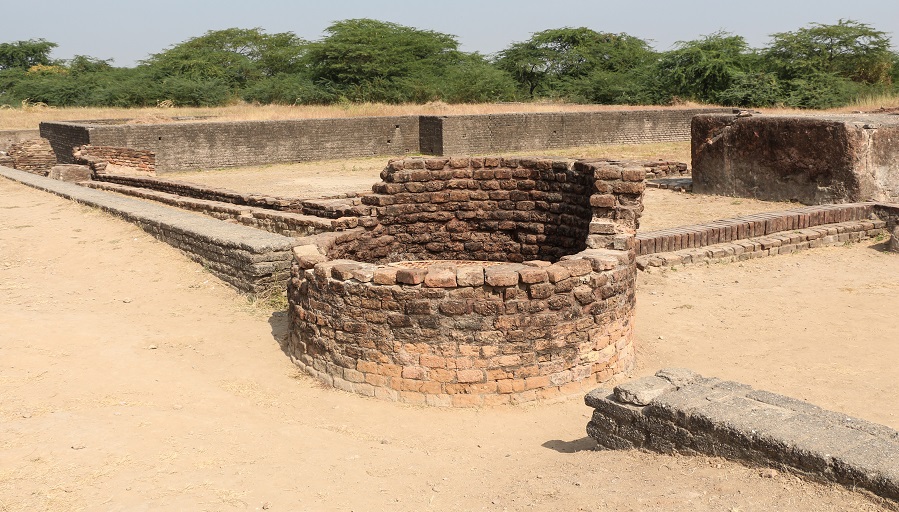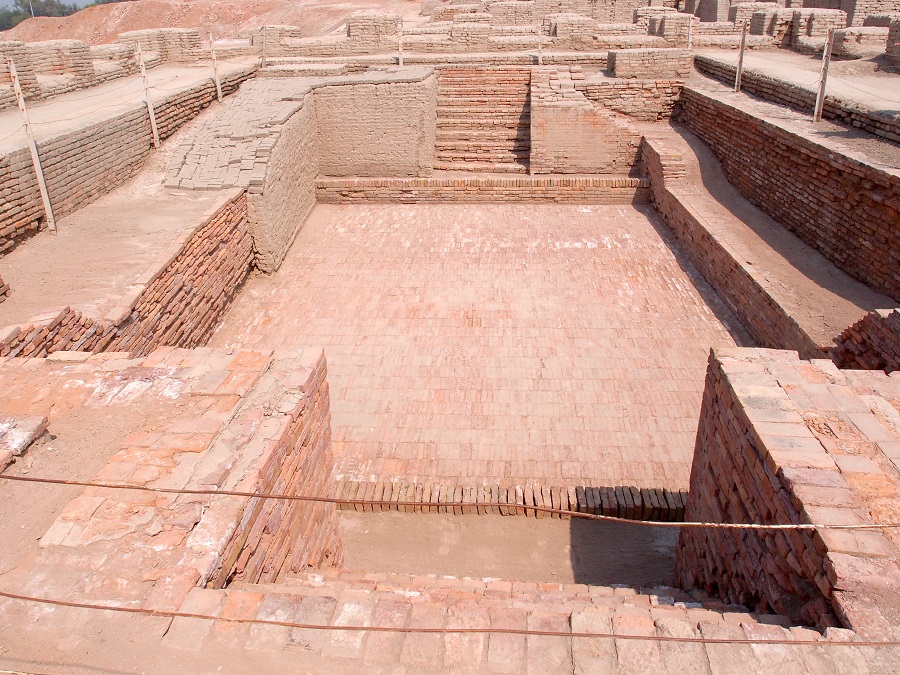Continued from PART – I https://zerobeyond.com/global-urban-collapse-part-i/
ANCIENT WISDOM IS STILL UNMATCHED
The ancient Indus Valley Civilization c. 2600 BCE and 1900 BCE is still renowned for its highly advanced urban planning. The “Drainage System” was way ahead of its time! Neither the Mesopotamian nor the Ancient Egyptian Civilizations had built such effective and sophisticated systems during their existence. Interestingly, even after 4,600 plus years from today, the civilization which flourished in Ancient Bharat (India), reflects a high degree of civic planning, social organization and concern for public hygiene. Prominent cities like Mohenjo-daro, Harappa and Dholavira and Lothal were laid out in a grid pattern to make it easier to plan drainage lines. It is remarkable to note that their system was centralized and integrated into the city planning, and not as an afterthought.

Lothal Ancient Well – Photo Courtesy: Bernard Gagnon
The early settlements were designed with a remarkable degree of civic foresight. All the streets were laid out in a grid pattern. Every household had access to a private bathing area connected to a system of covered brick drains. These domestic drains flowed into larger and centralized public drains built along the streets, which were all laid with a careful gradient to ensure gravity-based water flow and prevent stagnation. The presence of soak pits and cesspools at household levels highlights an understanding of basic water filtration, thereby minimizing the risk of blockages and promoting cleanliness. How brilliant is that!

Great Bath View of Mohenjodaro – Photo Courtesy: Saqib Qayyum
Another noteworthy feature was how the drainage infrastructure was supported by inspection shafts and manholes placed at intervals, enabling regular maintenance. The integration of sanitation into the overall city layout reflects not only technical expertise, but also the cultural emphasis on hygiene and order. In Lothal, the system extended to manage stormwater and tidal flows, thereby showing how an impressive adaptation to regional geography was thought of days ahead of Centuries from today. The Indus Valley Drainage System stands as a testament to the civilization’s urban sophistication, environmental awareness and commitment to public health, unlike our 21st Century’s Modern Civilization.

DRAINAGE & SEWAGE: THE HEART AND NERVOUS SYSTEM OF A DYING CITY
Ironically, today we have created our cities like fragile bodies – flooded each year multiples times and then we all act so surprised as if the earth has fallen on us. This is sheer stupidity! I am blunt, because it has become the global reality! Unlike the age-old Civilization, when they had limited means, technology, machineries and data – today we have every data in the world, innovative engineering machinery tools and technology and yet cities are collapsing under repeated flooding. Across the world one thing is common though – “Ineffective Flawed Drainage and Sewage Systems”. Isn’t it ‘THE’ wonderful achievement of our Modern World?

Drainage and sewage systems are the arteries and nerves of urban life. One blocked, just one artery, in the human body gives a human heart attack. Science has advanced so much that we have found an outstanding innovative way to install a stent to restore the blood flow to save human lives.

“Drainage and Sewage Systems” of cities are just like our human bodies’s nervous system. Drains blocked! Sewers outdated! Stormwater unchanneled! Each year, if not months, Urban Cities also get heart attacks as floods take over the cities to destruct at will – mainly caused by HUMAN GREED. Interestingly, instead of fixing the serious mandatory problem, human greed takes over their multiple roles – faulty policymaking continues as corrupt system hands over contracts to the same contractors to patch up, mind you – not fix the problem once and forever. This is not planned ignorance, but PLANNED SYSTEMICALLY to benefit Corporation and vested interested parties!
To be continued….. Watch out for the PART III
PLEASE NOTE: Images have been used for representation purpose only